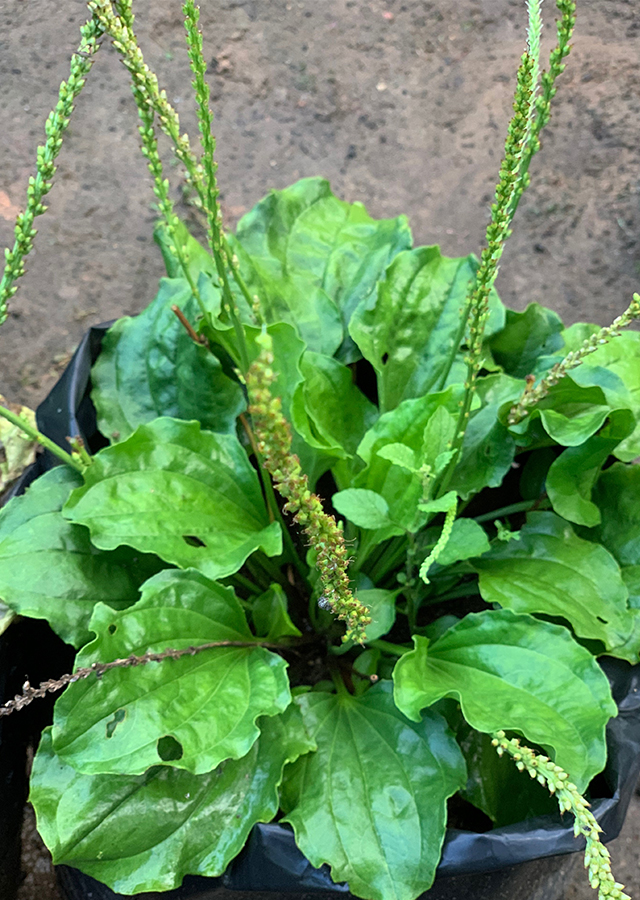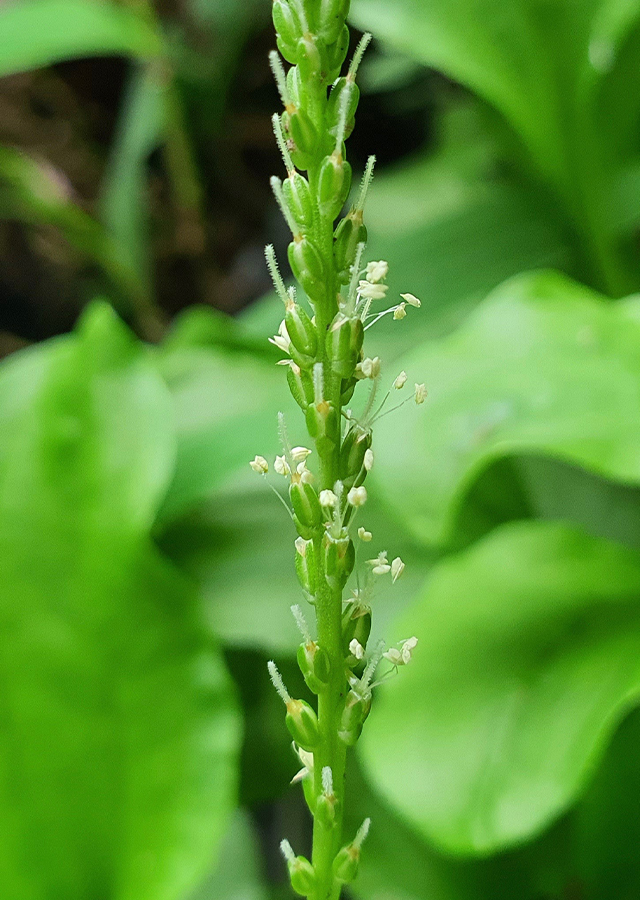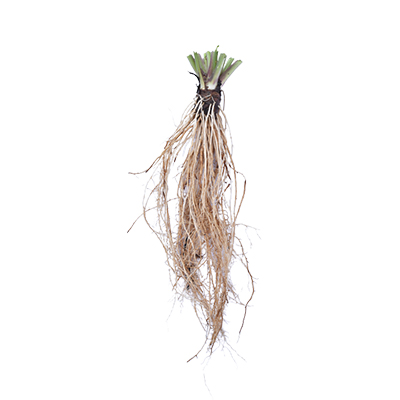Greater Plantain
Plantago major L.
Plantaginaceae
Location in our garden
Principal



Synonym
Plantago adriatica Campana
Plantago altissima Loisel.
Plantago angustata Schur
Habitus
Herbaceous. Perennial, shrubs, grow up to 30 cm tall
Part Used
Leaves
Seeds
Roots
Growing Requirements
Full Sunshine
Habitat
Riverbanks
Forest
Roadside
Grassland
Overview
It is a worldwide weed originating from Eurasia. It is distributed widely throughout Europe, North Africa, North and Central Asia and has naturalized throughout most of the world in temperate climates, it is also present in some tropical areas. European Indians called it "White man's footprint' because it was found everywhere the Europeans had been. The plant is harvested from the wild for local use, especially as a medicine but also as a food, as a medicinal herb and is sometimes also traded.
Vernacular Names
Ch'e-ch'ien (Chinese), Mo noi (Thailand), Antén (Spanish), Onioobako (Japanese), Lanting (Tagalog-Philippines), Weegbree (Netherlands), Grand plantain (French), Breitwegerich (German), Petacciola (Italian).
Agroecology
Succeeds at medium altitudes, in any moderately fertile soil in a sunny position. Plants are tolerant of water logging, compacted soils and trampling. It is tolerant of high nutrient conditions and is found in agriculturally improved grassland.
Morphology
- Roots - have a marked ability to penetrate compacted soils.
- Leaves - occurring in a rosette near the ground. Leaves are oblong or oblong-ovate, 5 to 10 centimeters long, with entire or toothed margins, usually 5 nerved.
- Flowers - many small flowers subtended by bracts 1-2 mm, ovate, glabrous, brownish white with green keel. Sepals 1.5-2.5 mm, green.
- Fruits - capsules, ovoid, about 3 millimeters long and containing 2 cells.
- Seeds - each cell of fruits has 4 to 8 angular, very minute, black seeds. Each plant can produced 20,000 seeds, and it has been known to remain viable for more than 60 years in the soil.
Cultivation
Generative propagation is by seed. Germination is best at temperatures of 25-30 °C, and a long photoperiod (16 hours).
Chemical Constituents
Saponins, flavonoids, polyphenol, plantagin, aukubin, ursolic acid, β-sitosterol, n-hentriakunta, tannins, plantaglusida (methyl d-galakturonat, d-galactose, l-arabinosa) and l-rhamnose, naphozilin compounds.
Traditional Medicinal Uses
- Studies have revealed aucubin, a glycoside, reported as a powerful antitoxin.
- Phenylethanoid glycosides used to treat inflammation, gastritis and peptic ulcers, leishmanial ulcers, to reduce pain, as an antidiarrhoeal agent, treatment of dermatological conditions, common cold, viral hepatitis, and has expectorant, cicatrizant and astringent properties.
- Extracts of this species show some degree of antibacterial activity.
- The root is astringent and febrifuge.
- In the United States, Plantago major has been patented as a natural smoking deterrent product (available in spray, capsules or drops), which contains no nicotine and is not addictive.
- Decoction of plant used for asthma.
- Decoction of leaves used as emollient.
- Root decoction is used to treat cough and as a remedy for the bite of rattlesnakes.
- In Romania and Bulgaria, used for cuts and scratches.
- In Ayurveda, used for constipation, diarrhea, dysentery.
- In China, used for colds and viral hepatitis.


